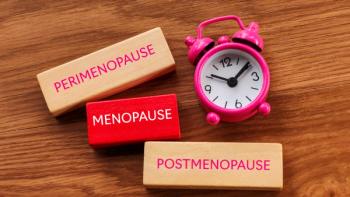
- Volume 0 0
t-PA Is a Lifesaver for Patients with Acute Ischemic Stroke
Stroke is the third leading cause ofdeath in the United States and isa prevalent cause of long-termneurologic disability.1 Although stroke ismore likely to occur in older patients, itcan occur in people of any age.2 Themajority of strokes happen as a result ofthe blockage of a brain blood vessel byeither a blood clot or plaque. The blockageprevents oxygen and nutrients frombeing delivered to a specific part of thebrain, causing some damage to that partof the brain. This type of stroke is termedan acute ischemic stroke (AIS).
The risk factors for ischemic strokeinclude the following:
- Hypertension
- Smoking
- Hypercholesterolemia
- Diabetes mellitus
- Transient ischemic attacks
- Carotid stenosis
- Cardiovascular problems (such asatrial fibrillation, valvular disease,atrial and ventricular enlargement,congestive heart failure, angina, ormyocardial infarction)
Deficiency or lack of delivery of oxygenand nutrients, occurring in AIS, leads tohypoxia and, eventually, to a decrease inenergy production in the particular part ofthe brain. This decrease initiates the braincell death process. The initial causes ofthis devastating process can be thrombosis,embolism, or hypoperfusion.
Thrombosis involves a formed clot thatcannot pass through a blood vessel,which therefore blocks the flow of bloodin or to the brain. This condition is worsenedin cases of atherosclerosis, whenthe lumen of vessels becomes narrow.As blood flow and velocity change,microruptures of the atherosclerosisplaques start to take place. This activity,in turn, initiates the process that endswith fibrin clot formation.
Embolism involves a circulating pieceof a blood clot finding its way to a brainblood vessel and getting stuck there. Theclot can have a cardiogenic origin—forexample, atrial fibrillation—or it can berelated to the development of the atheroscleroticplaques in the carotid and vertebralarteries.
Hypoperfusion usually arises from atheroscleroticdisease and a hypotensivecondition, both of which lead to thedecrease of the perfusion pressure in thebrain. To compensate and to keep up thenecessary intracerebral pressure, smallarterioles constrict, causing an ischemicepisode.3
This article will further explore theprocesses and changes in the humanbody that lead to AIS. There is a balancebetween the coagulation cascadeprocess, resulting in thrombi formation,and the fibrinolytic process, leading tothrombolysis. This balance is calledhemostasis. The clotting cascade involvesintrinsic and extrinsic pathways,which work hand in hand to get to thefinal product—cross-linked fibrin polymer—which, together with plateletaggregation, forms a thrombus.4
Fibrinolysis is a process of fibrin clotdegradation and is activated by tissueplasminogen activator (t-PA). Moreover,plasmin plays a very active role in clotlysis by breaking the fibrin into fibrin-solubledegradation products.4 Plasmin circulatesin the form of the proenzymeplasminogen. As the clot forms, plasminogenbinds to fibrinogen and fibrinand gets incorporated in the clot.Additionally, endogenous single-chaint-PA gets released, mainly from the vascularendothelium and also from neuronsand microglia of the central nervous system.4 t-PA binds to fibrin, becomes activated,and converts inactive plasminogento active plasmin.
Once the fibrinolysis process is over,plasmin becomes freely circulating andgets inactivated by alpha2-antiplasmin,and t-PA gets inactivated by plasminogenactivator inhibitors (PAI-1 and PAI-2).5Studies have shown that an imbalance inhemostasis, described as an increasedformation of fibrin over fibrinolysis anddecreased t-PA activity—due to the elevatedlevels of PAI-1—causes a hypercoagulablestatus leading to AIS.5,6
Scientific studies have shown that t-PAcan defend the brain from the acuteischemic attack due to its fibrinolyticaction.6 To restore the balance betweenthrombus formation and fibrinolysis,physicians administer exogenous t-PAmedication. The t-PA medical compoundwas first used in 1981 for the treatmentof an iliofemoral thrombus.7 In the UnitedStates, t-PA medication received therapeuticapproval for the treatment of AISin 1996.8
t-PA medication is a single serine proteasethat contains 527 amino acids andweighs 70,000 daltons.6,9 Currently, t-PAmedication is synthesized by the recombinant DNA technique. In 1995, the NationalInstitute of Neurological Disorders andStroke, along with the t-PA Stroke StudyGroup, demonstrated the benefit andeffectiveness of administering the medicationto AIS patients within 3 hours ofthe onset of symptoms.3 This 3-hour periodis called the therapeutic window. It isdefined as the period in which medicalinvolvement can still reverse brain damage,restore cerebral blood flow, and minimizecognitive and physiologic poststrokecomplications. If t-PA therapy is conductedbeyond the 3-hour therapeutic window,the chances of recovery still exist butdecrease.10
After a number of investigations, t-PAwas approved by the FDA for the managementof acute stroke in adults. t-PA is recommendedto be used only within 3 hoursof the onset of symptoms of AIS and onlyin patients in whom a computed tomography(CT) scan did not detect intracranialhemorrhage.9 Besides these 2 fundamentalrecommendations, t-PA therapy has anumber of other clinical guidelines. Everypharmacist needs to be familiar withthem to assist a physician in the managementof AIS patients.
Treatment Protocol
It is to a pharmacist's benefit to befamiliar with the treatment protocol. Thegoal is to restore cerebral blood flow andto improve neurologic function. If a physiciandecides to give alteplase, the pharmacistshould immediately begin to analyzethe order. The pharmacist shouldcheck the diagnosis and confirm that thepatient in fact has AIS. Then, the pharmacistshould proceed to check the patientfor allergies, age, weight, seizure status,hypertension status, severe neurologicdeficit, and a history of intracranial hemorrhage.Furthermore, the pharmacistshould check for pregnancy and lactationstatus in female patients.
Weight should be received in kilograms.The package insert suggests a recommendeddose of 0.9 mg/kg (maximum 90mg per total dose). The total calculateddose should be given over 60 minutes.The10% part of the total dose is a loadingdose, which should be given as an intravenous(IV) bolus over 1 minute. The recommendedroute of administration is IV.
Alteplase should not be administeredto a patient with a seizure inaddition to stroke. Hypertension shouldbe controlled before the treatment isgiven. Uncontrolled hypertension maycause injury to the endothelial layerand cause a disturbance of theblood-brain barrier. This disturbancepresents an opportunity for plasmaproteins to be deposited on the bloodvessels, making them less elastic. Thevessel lumen narrows down, and, inaddition to the activation of the coagulationcascade, results in thrombosisdevelopment.
Patients with severe neurologicdeficit have a greater chance of developingintracranial hemorrhage after t-PAadministration.
In addition, t-PA should be administeredwith caution to pregnant and lactatingmothers. (It is in PregnancyCategory C.)
Laboratory Monitoring
When laboratory results becomeavailable, a pharmacist can confirm thatthere is no active bleeding by checkingprothrombin time (PT), international normalizedratio (INR), activated partialthromboplastin time (aPTT), plateletcount, red blood cell count, and hemoglobinand hematocrit levels. The packageinsert advises that patients receivingtreatment with alteplase should have anINR <1.7, a PT <15 seconds, and aplatelet count >100,000/mm3, and theaPTT should not be elevated. Furthermore,the fibrinogen level, D dimer, andC-reactive protein (CRP) should bechecked to identify a potential hypercoagulativestate. CRP inhibits t-PA activity.11 Fibrinogen degradation productsand fibrin degradation products wouldshow the status of fibrinolysis and primaryfibrinolysis, respectively.
In addition, a glucose level of <50 mg/dLor >400 mg/dL warrants that a pharmacistnotify a physician, because the symptomsmay be mistaken for stroke, and such glucoselevels also aggregate neuronalischemia. If a patient receives otherorders for an anticoagulant, antiplatelet,or another fibrinolytic agent within thefirst 24 hours after initiating t-PA treatment,a pharmacist should notify a medicaldoctor about the potential bleedingrisk. Interestingly enough, t-PA is known tocause angioedema. Also, a case has beenreported of a patient developing a lingualhematoma with t-PA usage.12 The pharmacistshould identify whether thepatient is taking any medication that maycause angioedema, such as an angiotensin-converting enzyme inhibitor, and, ifso, notify the physician. If angioedemadevelops, discontinuation of t-PA andadministration of corticosteroids and antihistaminesare advised.13
Pharmacists should educate theirpatients about stroke symptoms, especiallypatients who are in a high-risk categoryfor stroke. Symptoms of strokeare an unexpected onset of one-sidedweakness or sensory loss in the face, aleg, or an arm; or an unexpected difficultyin talking or understanding speech. Incase of any of those symptoms, a personshould immediately call 911 and askto be taken to the emergency departmentat a nearby hospital.8
In conclusion, only a well-coordinatedteam effort of pharmacists andother health care providers can helppatients with AIS. These patients haveno choice but to rely on the effectivenessof the team.
Dr. Motylev is a pharmacy managerin the hospital setting.
For a list of references, send astamped, self-addressed envelope to:References Department, Attn. A. Stahl,Pharmacy Times, 241 Forsgate Drive,Jamesburg, NJ 08831; or send an e-mailrequest to: astahl@ascendmedia.com.
Articles in this issue
over 19 years ago
Should Pharmacists Receive Overtime Pay?over 19 years ago
Pharmacists—Cops or Not? (Part 2)over 19 years ago
canyouREADtheseRxs?over 19 years ago
compoundingHOTLINEover 19 years ago
NSAIDs and Antihypertensive Agentsover 19 years ago
FDA Approves New Constipation Drugover 19 years ago
Angina Drug Approvedover 19 years ago
Pancreatic Cancer Trials Offer Positive Resultsover 19 years ago
Cancer Drug Receives Approval for 2 Conditionsover 19 years ago
Long-term LNG/EE Use Does Not Hinder Future OvulationNewsletter
Stay informed on drug updates, treatment guidelines, and pharmacy practice trends—subscribe to Pharmacy Times for weekly clinical insights.















































































































































































































